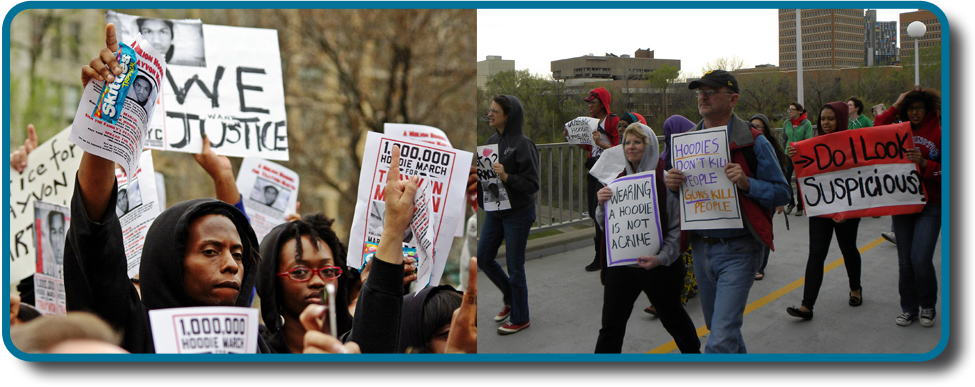Introduction
- Page ID
- 76949

On the night of February 26, 2012, Trayvon Martin, a 17-year-old African American high school student, was shot by a neighborhood watch volunteer, George Zimmerman, in a predominantly White neighborhood. Zimmerman observed the boy dressed in a hoodie and pursued Martin. Zimmerman called the police to report a person acting suspiciously, which he had done on other occasions. According to the 911 call transcript, Zimmerman said on the call, "[expletive] punks. These [expletive], they always get away." The 911 operator told Zimmerman not to follow the teen, as was also stated in the police neighborhood watch guidelines that had been provided to Zimmerman. A physical altercation ended with Zimmerman fatally shooting Martin. Zimmerman claimed that he acted in self-defense. Martin was unarmed, and after his death, there was a nationwide outcry. A Florida jury found Zimmerman not guilty of second degree murder nor of manslaughter.
There have also been tragic situations with deadly consequences in which police officers have shot innocent civilians. In 2019, Atatiana Jefferson's neighbor used a non-emergency line to call the police because Jefferson's front door was open in the late hours of the night. The police arrived and an officer went to the back of the yard. Jefferson, not knowing that the police had been called, reached into her purse and got out her legally owned gun. The officer perceived a threat and fired upon Jefferson, killing her. Her 8-year-old nephew witnessed the incident, as he was playing video games with his aunt. Why did each of these nights end so tragically for those involved? What dynamics contributed to the outcomes? How can these deaths be prevented?
Social psychologists examine how the presence of others impacts how a person behaves and reacts, whether that person is an athlete playing a game, a police officer on the job, or a worshiper attending a religious service. Social psychologists believe that a person's behavior is influenced by who else is present in a given situation and the composition of social groups.


